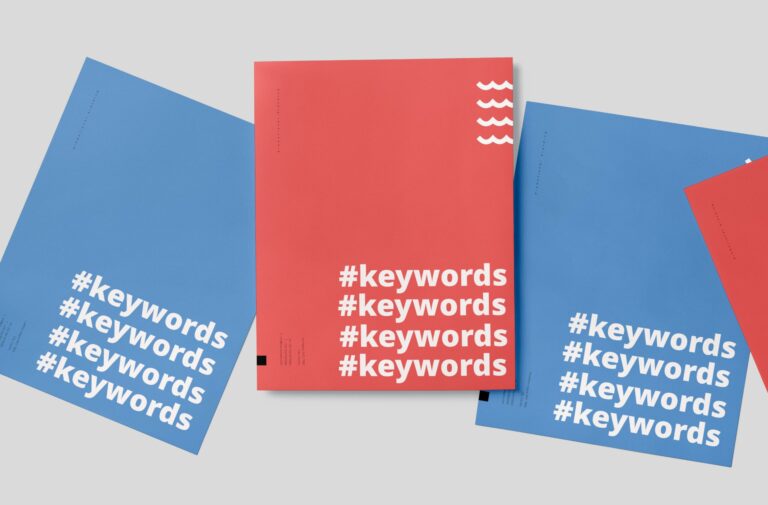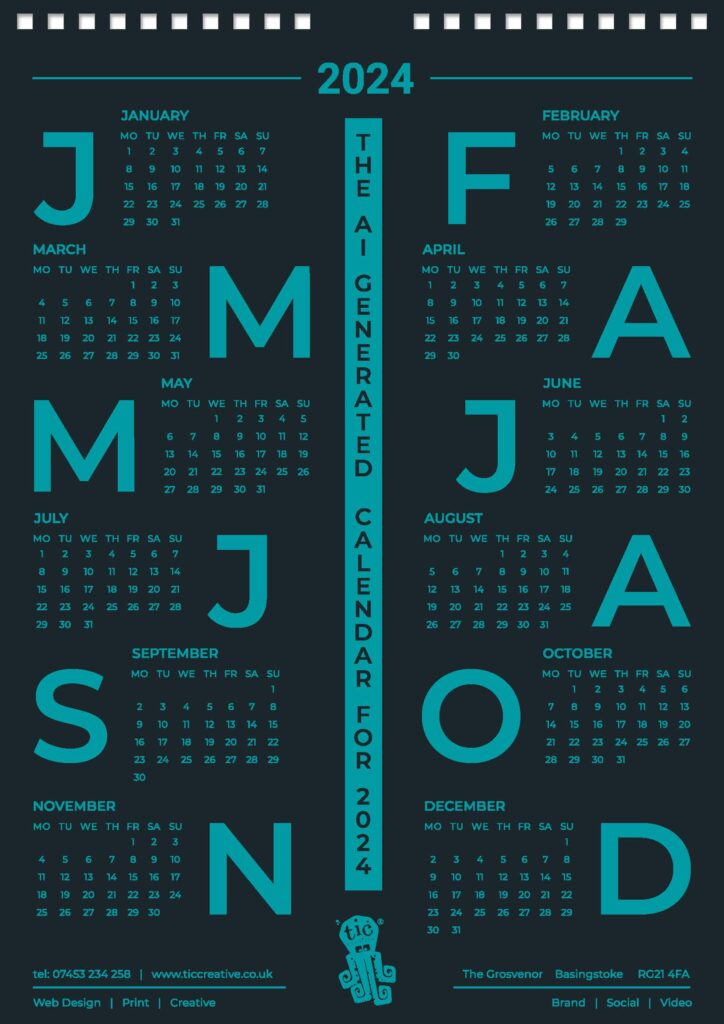
In the dynamic landscape of digital marketing, cornerstone content emerges as a pivotal element of a winning marketing strategy. This type of content is not merely an aspect of your strategy to be considered as an afterthought; when effectively prioritized and meticulously crafted, it holds the power to transform your brand’s online presence. Cornerstone content underpins everything from your search engine optimization (SEO) efforts to your demand generation initiatives, serving as the foundation upon which your content marketing strategy is built.
The significance of cornerstone content in enhancing a website’s SEO cannot be overstated. By targeting your most crucial keywords and presenting comprehensive, authoritative information, it greatly improves your site’s visibility and ranking on search engines. This, in turn, drives higher traffic volumes, engages potential customers, and propels them through the sales funnel. Furthermore, the strategic deployment of cornerstone content facilitates demand generation by capturing and nurturing leads, thereby accelerating the journey from prospect to customer.
Understanding Cornerstone Content
Definition and Importance
Cornerstone content is comprised of the most essential, defining pieces of your website. It constitutes the pages or articles that are pivotal to your entire online strategy—those that offer the most comprehensive, informative, and valuable content to your audience. Think of your content marketing strategy as a pyramid. At the base of this pyramid lies your general content, which supports the layers above. As we move up, we reach the cornerstone content, which forms the critical layer right below the capstone—your home page, pricing page, and product pages. This cornerstone layer is vital for driving traffic to the decision-making pages at the top, effectively guiding your audience towards making a purchase.
Characteristics of Cornerstone Content
What sets cornerstone content apart from other types of content is its depth, quality, and value. This content is meticulously researched, richly detailed, and crafted to provide insights and expertise that establish your brand as a thought leader in your field. It aligns with your audience’s needs, answering their most pressing questions and solving their significant problems. The comprehensiveness of cornerstone content means it covers a broad range of subtopics within a given subject area, providing a one-stop resource for readers. Its informativeness ensures that the audience gains new knowledge or perspectives, and its inherent value encourages engagement, sharing, and return visits.
The creation of cornerstone content is an investment in your brand’s online authority and influence. By dedicating resources to develop content that stands out for its depth, accuracy, and relevance, you position your brand not just as a provider of products or services, but as a trusted source of information and solutions. This strategic focus on quality and value in your cornerstone content not only enhances your SEO performance but also significantly contributes to your overall marketing objectives, paving the way for sustained growth and success in the digital realm.

The Impact of Cornerstone Content on SEO
In the digital marketing realm, cornerstone content is not just a part of the strategy; it’s the bedrock that supports and enhances the visibility and authority of a website in search engine results. This significance is especially pronounced when it comes to Search Engine Optimization (SEO), where the strategic creation and placement of cornerstone content can lead to remarkable benefits.
Keyword Strategy and SEO Benefits
Cornerstone content acts as the central hub for your website’s keyword strategy. By targeting the most vital and competitive keywords related to your business, this content does more than just attract visitors—it engages them with comprehensive and authoritative information. This not only satisfies the user’s quest for information but also signals to search engines the depth and relevance of your site’s content. As a result, search engines are more likely to rank your website higher, acknowledging it as a credible source of information on those topics.
The role of cornerstone content extends beyond attracting traffic; it’s about establishing a domain’s authority. By covering topics in-depth, your website becomes the go-to source for specific information. This depth of content not only meets the immediate needs of your audience but also aligns with the algorithms search engines use to determine authoritative and valuable content, thereby boosting your website’s authority in your industry or niche.
Internal Linking and User Experience
One of the most practical yet often overlooked aspects of SEO is the structure of internal linking. Cornerstone content sits at the heart of this structure, linking to and from other relevant content on your site. This interconnected web of links not only helps search engines crawl your site more effectively but also enhances the user experience by providing them with a roadmap to more valuable content.
The relationship between user engagement and SEO performance is pivotal. Engaging cornerstone content captures the audience’s attention, encouraging them to spend more time on your site and explore it further. This increased engagement leads to lower bounce rates and higher time on site, metrics that search engines interpret as indicators of a site’s value to its visitors. Consequently, this can positively influence your site’s rankings in search results.
Backlinks and Featured Snippets
The value of cornerstone content extends into the realm of backlinks and featured snippets—two critical elements of a successful SEO strategy. High-quality, authoritative cornerstone content is more likely to earn backlinks from other reputable sites. These backlinks serve as endorsements of your content’s credibility, further boosting your site’s authority and search engine rankings.
Moreover, the detailed and well-structured nature of cornerstone content increases the likelihood of your content being selected for rich snippets or featured snippets in search results. These snippets offer a prime opportunity to occupy coveted positions on the search results page, even above the first organic listing, providing significant visibility and traffic advantages.
The evergreen nature of cornerstone content ensures that it continues to drive traffic, attract backlinks, and maintain its relevance over time. Unlike timely news articles or trend-based content, cornerstone pieces address fundamental topics that remain relevant, ensuring a consistent flow of high-quality traffic. This enduring relevance makes cornerstone content a powerful tool in any SEO strategy, capable of delivering long-term benefits and solidifying a website’s presence in the digital landscape.

Creating Cornerstone Content
Creating cornerstone content is a meticulous process that involves deep understanding, strategic planning, and continuous engagement with your audience and content. It’s the foundation upon which your content marketing strategy stands, designed to not only attract but also engage and convert your target audience.
Identifying Cornerstone Topics
Strategies for Finding Topics:
- Audience Insights: Dive into your audience’s challenges, needs, and questions. Use social media listening tools, surveys, and feedback mechanisms to gather insights.
- Competitor Analysis: Examine what topics your competitors are covering and identify gaps or areas you can cover more comprehensively.
- Trend Analysis: Utilize tools like Google Trends to identify enduring topics of interest in your industry.
– Importance of Keyword Research and Audience Understanding:
- Keyword Research: Use keyword research tools to identify high-value keywords that are relevant to your brand and have a significant search volume. This will help in aligning your content with what your audience is searching for.
- Audience Personas: Develop detailed audience personas to better understand the needs, preferences, and content consumption habits of your target market.
Keyword Research and Content Planning
Detailed Approach to Keyword Research:
- Keyword Tools: Leverage tools like SEMrush, Ahrefs, or Google Keyword Planner to discover primary and long-tail keywords that encapsulate the user’s intent.
- Search Intent: Focus on the intent behind the keywords to ensure your content addresses the needs and questions of your audience.
Planning the Content Pyramid:
- Structuring Content: Organize your content into a pyramid structure with cornerstone content at the top, supported by mid-level and foundational content.
- Content Mapping: Map out how each piece of content connects, ensuring a logical flow and progression for the reader through your site’s content.
Outlining and Writing Cornerstone Content
Guidance on Outlining Content:
- Comprehensive Outlines: Start with broad sections that cover the main aspects of the topic, then drill down into detailed subsections that address specific points, questions, or issues.
- User Journey: Consider the user’s journey through the content, ensuring it logically progresses from introduction to conclusion, guiding the reader to the next steps or related content.
Tips for Writing Engaging and Informative Content:
- Value and Depth: Ensure your content provides unique insights, comprehensive information, and actionable advice.
- Engagement: Use engaging hooks, compelling narratives, and real-life examples to keep the reader interested.
- Visuals: Incorporate relevant images, infographics, and videos to complement and break up the text, making it more accessible and engaging.
Promoting and Maintaining Cornerstone Content
Promotion Strategies
The 80/20 Rule:
- Focus on Promotion: Spend 20% of your efforts on creating your cornerstone content and 80% on promoting it through various channels.
Examples of Promotional Tactics:
- Social Media: Share your content across platforms tailored to where your audience is most active. Use engaging descriptions and visuals to attract attention.
- Paid Advertising: Consider using paid search and social media advertising to boost the visibility of your cornerstone content to a targeted audience.
- Email Marketing: Leverage your email list to inform subscribers about your latest or updated cornerstone content, encouraging them to visit your site.

Regular Updates and Maintenance
Importance of Keeping Content Up-to-Date:
- Relevance: Regularly review and update your cornerstone content to ensure it remains accurate, relevant, and reflects the latest trends, data, and best practices.
Strategies for Monitoring and Updating Content:
- Content Audits: Conduct periodic content audits to identify opportunities for updates, improvements, or to add new insights.
- Feedback Loop: Incorporate feedback from users and analytics to understand how your content is performing and where it can be improved.
- Schedule Updates: Set a schedule for reviewing and updating cornerstone content, ensuring it continues to meet the high standards of quality and relevance expected by your audience and search engines.
Tips and Best Practices for Cornerstone Content Success
Creating, promoting, and maintaining cornerstone content is a comprehensive task that requires attention to detail, a deep understanding of your audience, and a strategic approach to content creation and marketing. Here are some tips and best practices to ensure your cornerstone content not only achieves but exceeds your marketing objectives.
Use Data and Research to Inform Your Content
- Incorporate Relevant Data: Enhance your cornerstone content with relevant data, statistics, and research findings. This not only bolsters the credibility of your information but also provides readers with tangible evidence that supports your narratives and recommendations.
- Market and Audience Research: Continuously engage in market and audience research to keep your content aligned with current trends, needs, and preferences. This ensures your cornerstone content remains relevant and valuable to your target audience.
Collaborate with Industry Experts and Influencers
- Expert Contributions: Seek contributions from industry experts or influencers for your cornerstone content. This could be in the form of quotes, interviews, or co-authored sections. Such collaborations not only enrich your content but also expand its reach and credibility.
- Backlink Opportunities: Collaborations with industry leaders and influencers can lead to backlink opportunities, further enhancing the authority and visibility of your content in search engines.
Leverage Storytelling and Case Studies
- Engage Through Stories: Use storytelling to make complex information more relatable and engaging. Personal stories, customer testimonials, and case studies can significantly enhance the appeal and memorability of your cornerstone content.
- Illustrate with Examples: Detailed examples and real-life case studies illustrate the practical application of concepts discussed in your content, making it more actionable for readers.
Focus on Evergreen Content
- Timeless Relevance: Create cornerstone content with a long shelf life. Choose topics that are fundamental to your industry and are likely to remain relevant and valuable over time. This approach ensures that your content continues to attract traffic and remain a reliable resource for your audience.
- Regular Updates: Commit to regularly updating your evergreen content to keep it current and accurate, thus maintaining its value and effectiveness in attracting and engaging your audience.
Prioritize Quality Over Quantity
- Invest in High-Quality Content: Dedicate resources to creating a few high-quality, comprehensive pieces of cornerstone content rather than spreading your efforts thin over numerous lower-quality pieces. Quality content stands out and is more likely to be shared, linked to, and ranked favorably by search engines.
- Unique Value Proposition: Ensure your cornerstone content offers something unique that can’t be found elsewhere. This could be in-depth analysis, unique insights, or comprehensive coverage of a topic.
Enhance User Experience
- Readable and Accessible Content: Structure your content to be easy to read and navigate. Use clear headings, subheadings, bullet points, and short paragraphs to break up text and facilitate skimming and scanning.
- Multimedia Elements: Integrate images, videos, infographics, and interactive elements to make your content more engaging and to cater to different learning styles and preferences.
Monitor Performance and Adapt
- Performance Analysis: Regularly check how your cornerstone content performs in terms of traffic, engagement, conversion, and SEO rankings. Use this data to make informed decisions about updates and optimizations.
- Adapt Based on Feedback: Be responsive to feedback from your audience and changes in your industry. Adapt and update your content as needed to ensure it continues to meet the needs and expectations of your audience.

Tips and Best Practices for Cornerstone Content Success
Creating, promoting, and maintaining cornerstone content is a comprehensive task that requires attention to detail, a deep understanding of your audience, and a strategic approach to content creation and marketing. Here are some tips and best practices to ensure your cornerstone content not only achieves but exceeds your marketing objectives.
Use Data and Research to Inform Your Content
- Incorporate Relevant Data: Enhance your cornerstone content with relevant data, statistics, and research findings. This not only bolsters the credibility of your information but also provides readers with tangible evidence that supports your narratives and recommendations.
- Market and Audience Research: Continuously engage in market and audience research to keep your content aligned with current trends, needs, and preferences. This ensures your cornerstone content remains relevant and valuable to your target audience.
Collaborate with Industry Experts and Influencers
- Expert Contributions: Seek contributions from industry experts or influencers for your cornerstone content. This could be in the form of quotes, interviews, or co-authored sections. Such collaborations not only enrich your content but also expand its reach and credibility.
- Backlink Opportunities: Collaborations with industry leaders and influencers can lead to backlink opportunities, further enhancing the authority and visibility of your content in search engines.
Leverage Storytelling and Case Studies
- Engage Through Stories: Use storytelling to make complex information more relatable and engaging. Personal stories, customer testimonials, and case studies can significantly enhance the appeal and memorability of your cornerstone content.
- Illustrate with Examples: Detailed examples and real-life case studies illustrate the practical application of concepts discussed in your content, making it more actionable for readers.
Focus on Evergreen Content
- Timeless Relevance: Create cornerstone content with a long shelf life. Choose topics that are fundamental to your industry and are likely to remain relevant and valuable over time. This approach ensures that your content continues to attract traffic and remain a reliable resource for your audience.
- Regular Updates: Commit to regularly updating your evergreen content to keep it current and accurate, thus maintaining its value and effectiveness in attracting and engaging your audience.
Prioritize Quality Over Quantity
- Invest in High-Quality Content: Dedicate resources to creating a few high-quality, comprehensive pieces of cornerstone content rather than spreading your efforts thin over numerous lower-quality pieces. Quality content stands out and is more likely to be shared, linked to, and ranked favorably by search engines.
- Unique Value Proposition: Ensure your cornerstone content offers something unique that can’t be found elsewhere. This could be in-depth analysis, unique insights, or comprehensive coverage of a topic.
Enhance User Experience
- Readable and Accessible Content: Structure your content to be easy to read and navigate. Use clear headings, subheadings, bullet points, and short paragraphs to break up text and facilitate skimming and scanning.
- Multimedia Elements: Integrate images, videos, infographics, and interactive elements to make your content more engaging and to cater to different learning styles and preferences.
Monitor Performance and Adapt
- Performance Analysis: Regularly check how your cornerstone content performs in terms of traffic, engagement, conversion, and SEO rankings. Use this data to make informed decisions about updates and optimizations.
- Adapt Based on Feedback: Be responsive to feedback from your audience and changes in your industry. Adapt and update your content as needed to ensure it continues to meet the needs and expectations of your audience.
By adhering to these tips and best practices, you can ensure that your cornerstone content not only serves its purpose in the short term but also evolves into a lasting asset that continues to contribute to your marketing goals and business success.











